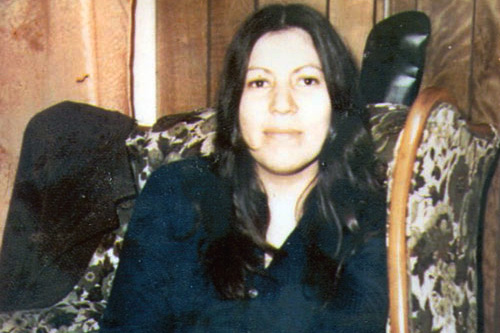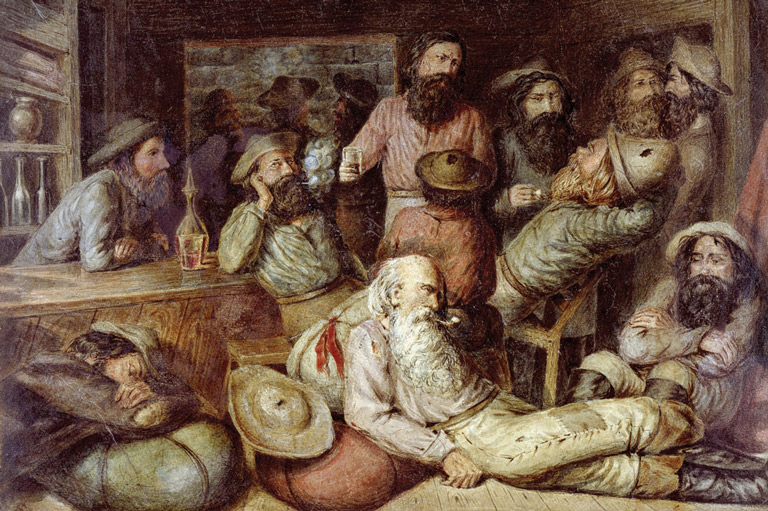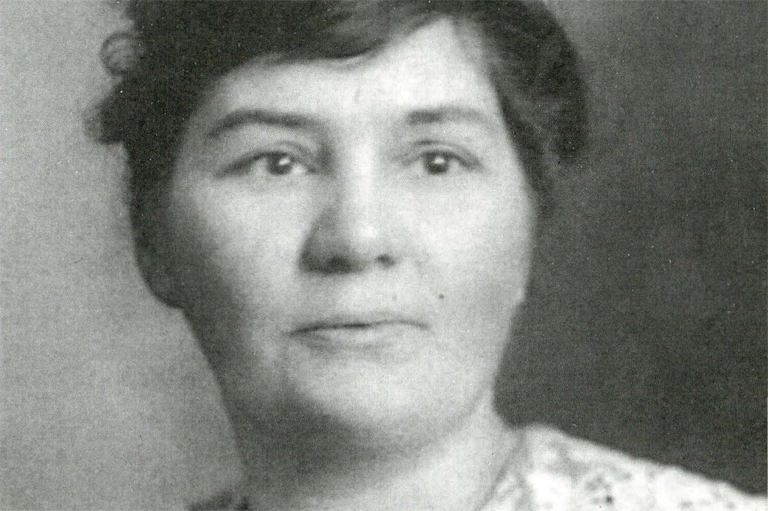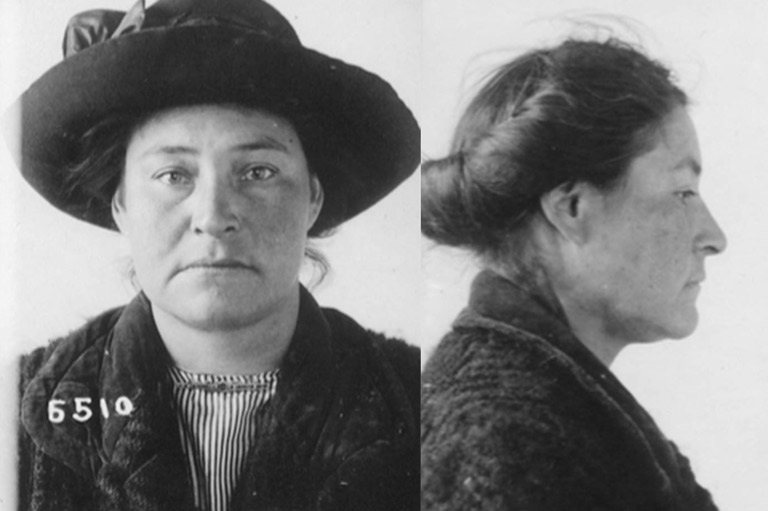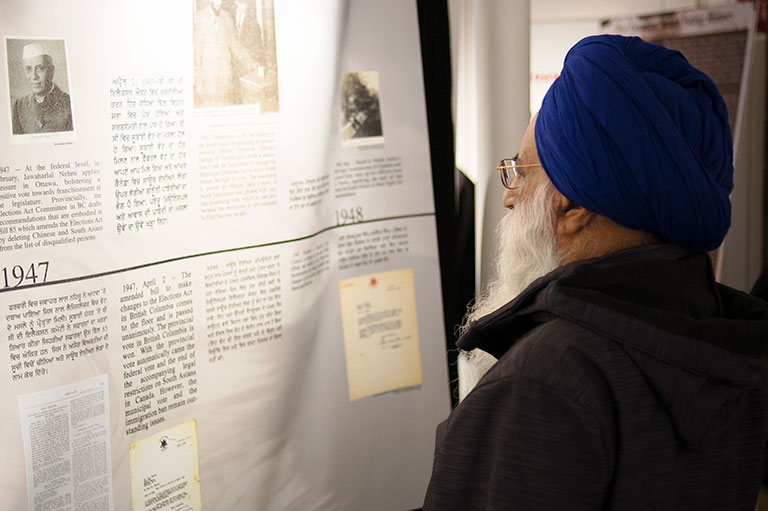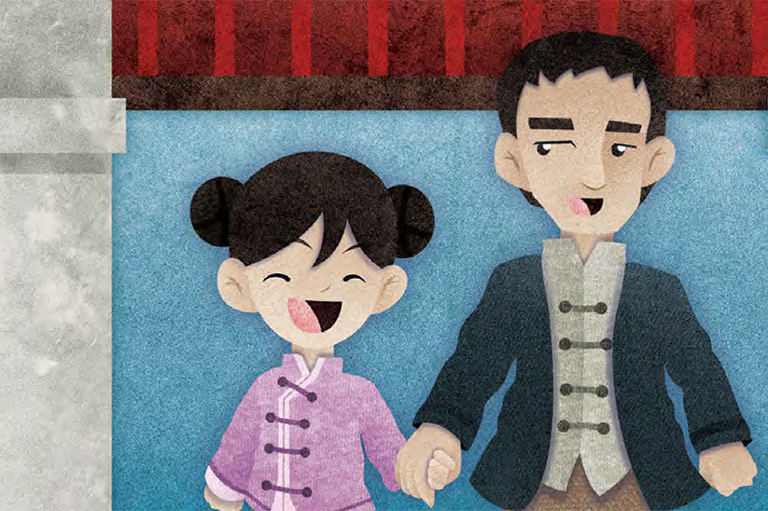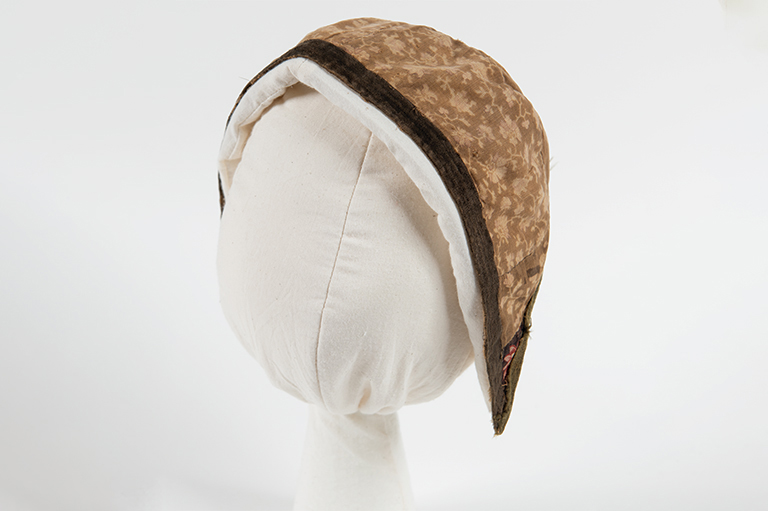Sheets of a Pleasant Colour
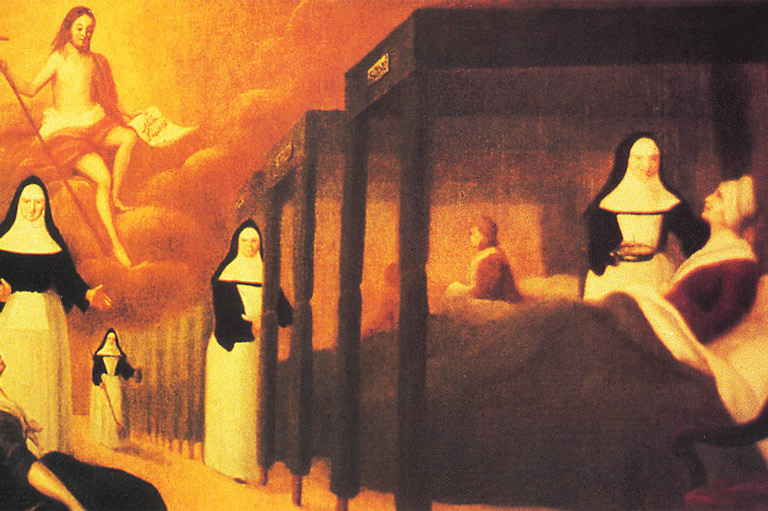
During its first half-century, in the wake of the Counter-Reformation that regenerated Roman Catholic faith, New France witnessed an explosion of missionary zeal. Jesuit fathers came to proselytize to the Huron people.
In the summer of 1639 three young women arrived in Quebec City in a small rowboat, perched on a heap of salted codfish. They were there to start the first hospital in the Americas north of Mexico.
On the beach to meet them were the governor of New France, the Jesuits, and a few other notables of a city whose population had not yet reached two hundred. The women were both nurses and nuns; they were still in their twenties, and they had come all the way from Dieppe, France.
The hospital they founded is still there 361 years later, with its high stone walls, its monastery, and its beautiful secret garden, and so is the community of Augustinian sisters. The last nun stopped working at the hospital four years ago, and the sisters ceded it to the province only five years ago.
In the lobby of this busy modern institution is a large mural of those three young women, full of enthusiasm, setting out from Dieppe for a new life worthy of their wildest dreams.
The long sea crossing was gruelling, but the sisters were each provisioned with twenty bottles of “good wine,” which must have helped, as well as smelling salts and a mattress. They kept up their morale by singing several church services a day below deck, in two-part harmony, and handing out rosaries to the sailors.
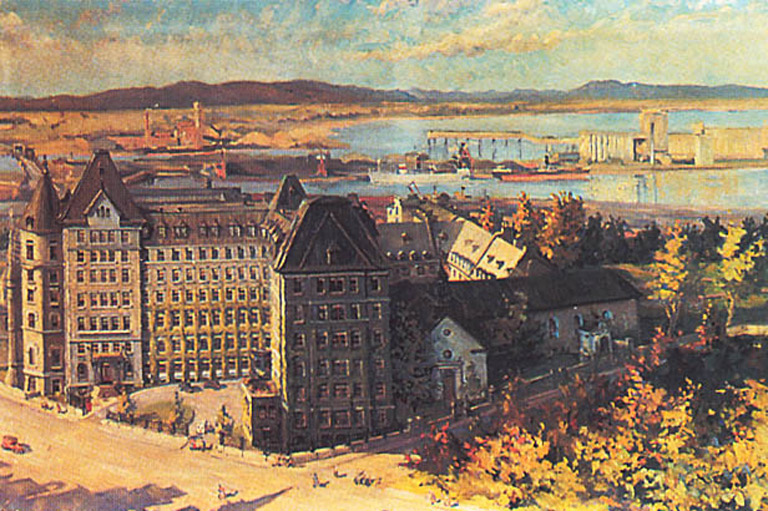
The women belonged to the Congrégation des réligieuses hospitalières de la Miséricorde de Jésus, a religious community based on the Rule of Saint Augustine that began in France in 1155, and had been running hospitals since the Middle Ages. By 1949 the order had opened nine more hôtels-dieu in Quebec.
Hôtels-dieu were the institutional expression of a spirituality that saw practical hospitality towards the poor and the sick as the best way to know divine love. In addition to their vows of poverty, chastity, and obedience, these sisters look extra vows of hospitality towards the poor who were ill.
With 7 uniquely curated newsletters to choose from, we have something for everyone.
It was through the very bodies of the poor that they were to serve Christ, “collecting the drops of the precious blood of Jesus Christ and, in their daily tasks, applying them for the salvation of the souls for whom it was shed.”
Their mission in this case was to help and convert the First Nations, for whom, as the Jesuit Father Le Jeune reported back from New France, to be the least bit ill was to have one foot already in the grave. The Algonquins might respond very well, he reasoned, to a hospital where they would be cared for and emerge alive.
Since he himself had rewritten the rule book of the Augustinian order a couple of years before, he was in a good position to know that the sisters would do a good job. Their hospital in Dieppe was, in his view, “one of the best-run in Europe.”
But in Quebec the nuns found themselves on what might as well have been a different planet. There was wilderness, war, lire, starvation, cold to a degree they had never imagined, and epidemics of mysterious and terrifying diseases. They were immediately faced with a smallpox epidemic that wiped out half the Huron Nation. From the description of the nineteenth-century historian Francis Parkman, we can gather a little of what their first days were like:
In the infected air of their miserable hovels, where sick and dying savages covered the floor, and were packed one above another in berths — amid all that is most distressing and most revolting, with little food and less sleep, these women passed the rough beginning of their new life.
The sisters literally gave the shirts off their own backs. They used up their entire supply of sheets to bandage their patients, and resorted to tearing strips off their own habits and wimples.
By 1644, the Iroquois wars made their second hospital, which was slightly upriver in Sillery, too dangerous to inhabit. But the sisters didn’t give up. They took Algonquian lessons in between tending the sick and lending a hand with the hammering and the planing for their third hospital.
The fourth was a stone building they were given in 1658, with a ten-bed ward and a chapel. This is the one whose foundations are still there today, next to the Budget car rental and just up the road from McDonald’s.
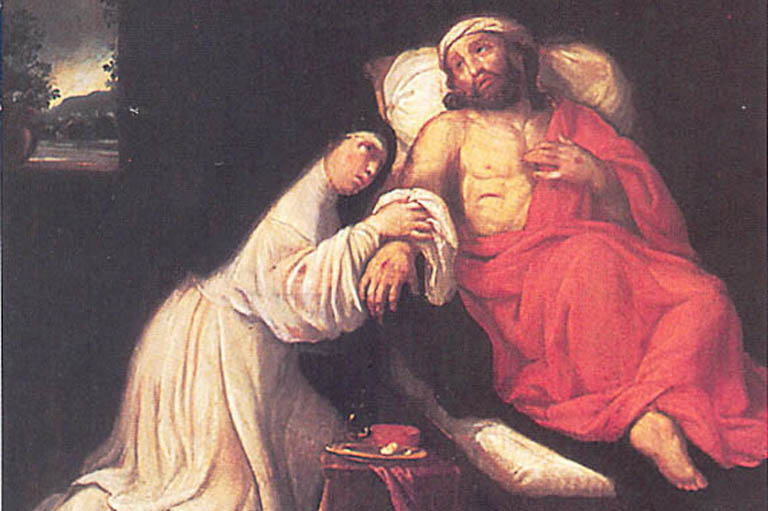
Unfortunately for their plans for winning the confidence of the First Nations, their hospital quickly became known among the Algonquins as “the house of death,” thanks to the waves of epidemics that were ravaging them, and soon none came there any more.
The sisters were kept more than busy, however, with the illnesses of the sailors, soldiers, and settlers, who died like flies almost every lime a boat docked in the harbour carrying the next epidemic.
The sisters knew that New France was a challenge, but that’s what they wanted. They were infected with a mystical fervour, inspired partly by theologian Vincent de Paul, that was sweeping through French society in reaction to the Protestant Reformation.
In the twenty years following the sisters’ arrival, hundreds of priests and sisters were propelled across the sea from France by some mystical vision of a saint calling them to the New World. By 1642 the city had five major religious communities on fire to serve the First Nations, whom they considered the very poorest of God’s poor. If it meant martyrdom so much the better.
At one point the French communities were so keen to send sisters that the Quebec contingent had to write and threaten that any more sisters who showed up would he put on the next boat home.
There was also money to be had, as French aristocratic patrons were inspired by the passionate letters home written by the Jesuits and Marie de I’Incarnation, an Ursuline nun who arrived in Quebec to educate French and Indigenous girls the same year as the first Augustinian sisters. The letters are still some of the most important documents in Canadian history.
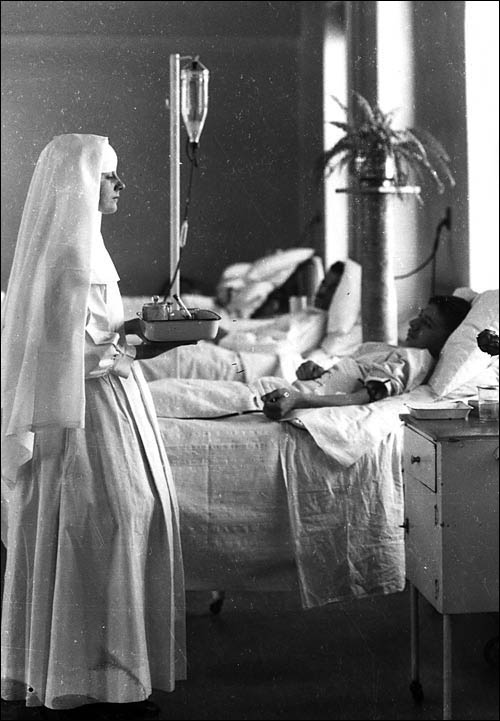
The money for Hôtel-Dieu came from the Duchesse d’Aiguillon, niece of one of the wiliest politicians in the history of France, Cardinal Richelieu.
Widowed at eighteen, she was filled with the mystical fervour of the era, but being also an eminently practical woman, she set up a foundation for the new hospital by investing in several trucking companies (or their seventeenth-century equivalent), whose revenue was to support the hospital.
The only payment the Duchesse exacted was that the sisters were to pray for her, and have the sick pray for her, daily, in perpetuity. (The sisters are still praying for her, 361 years later, but they no longer require their patients to do so.)
Her patience must have worn somewhat thin, prayers in perpetuity notwithstanding, since the nuns had abandoned their first two hospitals within a few years of arriving and had asked the Duchesse to fund each remake.
When they asked her to fund an expansion of the third, she raised 10,000 livres, but the ship carrying the money to New France sank in mid-Atlantic. The Duchesse never laid eyes on any of her hospitals, as she never set foot in the country.
Medical care was evolving quickly in Europe, for the first time in about fourteen hundred years. (Galen, the Greek anatomist whose theories formed the basis of European medicine until the Renaissance, died in 200 A.D.) The discovery of William Harvey, for example, that blood circulates rather than ebbs and Mows, had only been published in 1628.
But the discoveries of the Renaissance had only limited relevance in New France. Doctors had to adapt, deal with things they’d never seen before, and depend on local Indigenous knowledge.
In any case, hospitals weren’t medical places anyway. It wasn’t until two hundred and fifty years later that Hôtel-Dieu hired its first intern (and. incidentally, acquired its first washing machine). Until then the doctor dropped in once a day to diagnose and prescribe, and if he couldn’t make it, he’d send his son.
It was in 1885 that a doctor first suggested that the sisters install a telephone, so that they could call him if an emergency arose. Until that same year there was no operating room in the hospital. Operations were performed in the patient’s bed or on a table in the middle of the ward, which must have made for some interesting and messy spectating.
Save as much as 40% off the cover price! 4 issues per year as low as $29.95. Available in print and digital. Tariff-exempt!
It was the nurses who sheltered, washed, fed, and comforted the patients. They were also the administrators and the apothecaries who made medication out of the herbs they grew in their walled garden.
Some medications they imported from France, hut some Canadian remedies were becoming fashionable in France, and for a while Canada had the distinction of being an exporter of medicines in the form of ginseng, maidenhair fern, and heaver kidneys, the latter considered unrivalled in the treatment of madness.
The hospital’s apothecary was no small enterprise: when the hospital burned down in 1755, forty thousand livres worth of medicine was lost.
The constitution, revised in 1666, made every detail of hospital life very clear. The patients were to he treated with great respect and tenderness. The nuns were never to exhibit any squeamishness or discouragement, and were always to show themselves delighted to be serving the patients, so that they could read on the nuns’ faces “the joy and the pleasure they take in serving Jesus Christ in the persons of the poor.”
Men and women were to be kept strictly segregated, and the constitution itself demanded that the doors between them be kept locked. In times of war or epidemics, however, even this rule was stretched, and men were cheek by jowl with women.
Even in times of peace, one might find officers lounging around in the wards gossiping, or some woodsmen, arriving hack with an armful of the logs that were used to heat the hospital (250 cords per year!), relaxing by the ward’s huge woodstove to warm up again for the next load, and smoking their pipes.
Sisters kept order in the wards, and patients weren’t allowed to sing, gamble, or read inappropriate books.
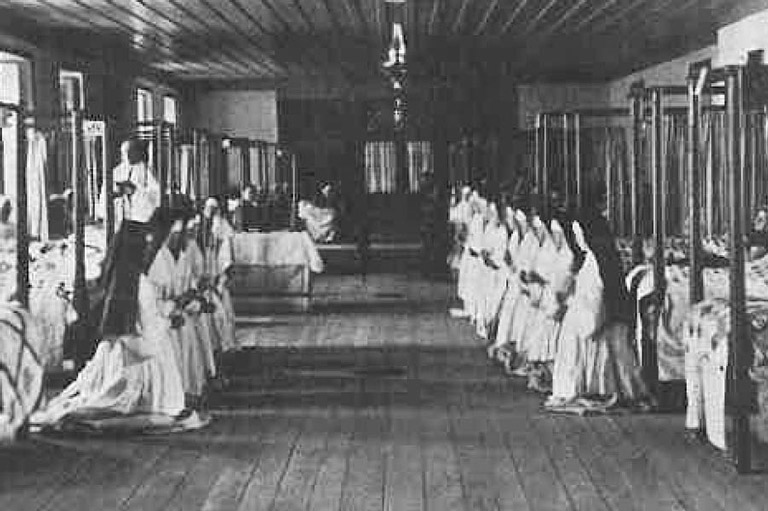
Each patient had a little wooden bedside table with an enamel teapot on it for tisanes. What’s more — and this was an innovation — no bed was to hold more than one patient. Curtains around the beds were changed on Ash Wednesday and All Saints Day. The sheets were to be made of good quality material and, the rules specified, should be of a pleasant colour.
The highly ceremonial mealtime ritual had come over from France with the founders, and remained unchanged until the 1930s. The food was the best in the city, such that people began to fake illness so they could come and eat there. A menu for 1744 lists the following daily requirements:
- 1 ½ lbs bread (part in soup)
- 12 oz of meat or fish
- fruit
- vegetable
- wine
- a shot of spirits (only on prescription)
Much of this, except the fish and wild game, was raised by the sisters themselves. Outside the city they had their own farmland to supply the hospital’s needs, including an entire island in the St. Lawrence River. The buildings of the hospital complex included a bakery, a morgue, a chapel, a butcher, a laundry, and a chicken coop. Clearly such juxtapositions raised no eyebrows in the seventeenth century.
The sisters not only enclosed their new hospital and monastery within a high stone wall, but deliberately situated it on a promontory overlooking the St. Charles Estuary, so that the wind would blow away the pestilential smells of the young city.
These smells can only be imagined by the number of city ordinances that were passed in the seventeenth and eighteenth centuries regarding, for example, not allowing pigs to roam the streets, insisting that corpses and dead animals be carted out of town, that garbage be disposed of, and that open drains (in effect, the sewers) be of a certain depth and covered with planks. Such ordinances were passed so often that one senses they were not taken very seriously, and disease proliferated.
The medical history of Quebec City consists of a litany of epidemics. The sisters lurched from crisis to crisis, and some of them succumbed themselves. As early as 1685 they had to put up extra tents in the courtyard to shelter all the victims of one epidemic, most likely smallpox. In 1702–3, smallpox carried off a quarter of the city’s population.
And in 1740, Mère Ste-Helene wrote that during a yellow fever epidemic that year, “the wards, the garrets, and outer parlours were all filled, and we can hardly pass between the beds. All became as black as negroes as soon as they were dead.”
In spite of the fact that Pasteur was not yet even a microscopic glimmer in his mother’s eye, the sisters standards of cleanliness were high, and they were required to “keep the place very clean, burn incense sometimes, and dispose of waste as quickly as possible.”
This concern for cleanliness was perhaps why, in spite of the epidemics, the hospital became known as a place where one could reasonably hope to stay alive. Annual mortality was only 10 percent.
The sisters also found their dedication to the poor highly relevant in Quebec. In 1664 they decided to set aside half the assets and revenue of the community for the care of the poor, including providing food, medicine, and even rent. The Iroquois wars, poor harvests, a decline in the fur trade, and the epidemics were taking their toll. The population of the city by 1676 was already 1,200, but a third of those were officially classified as destitute.
The colonial government regularly ordained money especially for the poor, specifying the ”pauvres malcides” (the sick who were poor) and ”enfants trouvés (abandoned children)-the earliest form of public welfare in Canada.
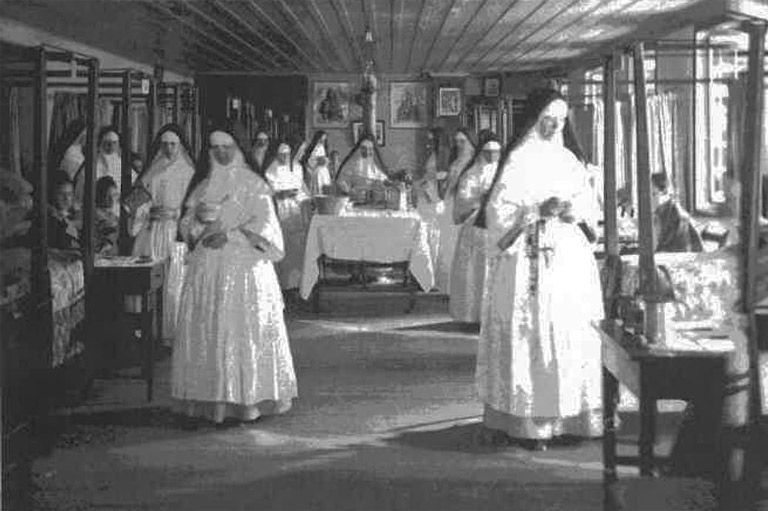
Soon the Duchesse suggested that ships’ captains begin to contribute toward the care of their sailors, and the king of France offered to take some responsibility.
By 1744, 27 percent of the hospital’s revenue was from the state, to pay for the king’s soldiers, sailors, prisoners of war, militias, and even shipyard workers. The king’s officers had long had a special ward of their own, and the sisters didn’t mind this favoritism so much, as the revenue helped them subsidize caring for the poor.
But when the bishop in 1719 demanded the priests have their own quarters, too, at the hospital’s expense, Soeur Marie-Andrée Duplessis de Sainte-Hélène complained in writing that this amounted to “Christ’s ministers taking the sustenance from the members of his body.” But they went along with it anyway.
The vocation of the sisters was as much to restore souls as bodies — a sort of retreat house crossed with a hospital. Even the architecture reflected this. Masses, held frequently in the wards, could be attended without even sitting up in bed. Hanging over the altar at the end of the ward was a devotional painting, which was changed regularly so that patients wouldn’t get complacent.
Each bed, instead of being identified numerically, was dedicated to a particular saint, whose name was carved in the wooden bedstead and into whose care the occupant was commended.
This practice was only changed at the end of the nineteenth century. Prayers were said loudly and distinctly before the altar twice a day. And another tradition that might take patients today by surprise: the nuns washed each person’s feet on admission to the hospital. They considered their vocation as a cross between that of Mary, the contemplative in the Gospel of Luke who sat at Jesus’ feet so as not to miss a thing that he said, and her sister Martha, the practical one who made sure Jesus got a decent meal.
This concern for the souls of their non-Catholic patients, whether they were First Nations or Protestant, took the form of trying to convert them and thereby save them from the fires of hell.
But when their patients were obstinate, the sisters’ creativity did not stop at care, prayer, and proselytizing: When one sailor refused to convert in 1665, a sister dropped the ground-up bones of one of the Jesuit martyrs into his herbal tea when he wasn’t looking. The sailor was miraculously converted, made a public confession of faith, and was discharged from the hospital “perfectly cured.”
After the British conquest in 1759, the new bosses frowned upon this evangelical aspect of their mission, but the nuns carried on anyway.
The concern for the patient in his or her entirety, body and soul, threatened to disappear as the nineteenth century progressed and the medical sciences began to dominate hospital care. But the nuns never let this concern go, and as hospital archivist François Rousseau observed, it’s one thing that has never changed about Hôtel-Dieu. Now they call it “attention to the client’s biopsychosocial contextual reality.”
The nuns lived in a society that was full of tumult. In addition to epidemics, fires were an ever-present threat. The entire hospital burned down four times in its first 115 years.
Debt so engulfed them that in 1762 they had to sell all their cutlery and take in other people’s laundry and mending. The cold of winter was absurdly cruel, and war was a constant menace. This wasn’t France, it was the wild north.
But inside the walls, prayers were said four times a day, the wards were decorated with special care on feast days, and modesty of the eyes was practised with the male patients. The sisters kept patiently cultivating their onions and turnips. In their relentless and centuries-old struggle for order, peace, and goodness, they carried on baking the bread, feeding the chickens, and weeding the medicinal herb garden.
If you believe that stories of women’s history should be more widely known, help us do more.
Your donation of $10, $25, or whatever amount you like, will allow Canada’s History to share women’s stories with readers of all ages, ensuring the widest possible audience can access these stories for free.
Any amount helps, or better yet, start a monthly donation today. Your support makes all the difference. Thank you!
Themes associated with this article
Advertisement
You might also like...

Canada’s History Archive, featuring The Beaver, is now available for your browsing and searching pleasure!

